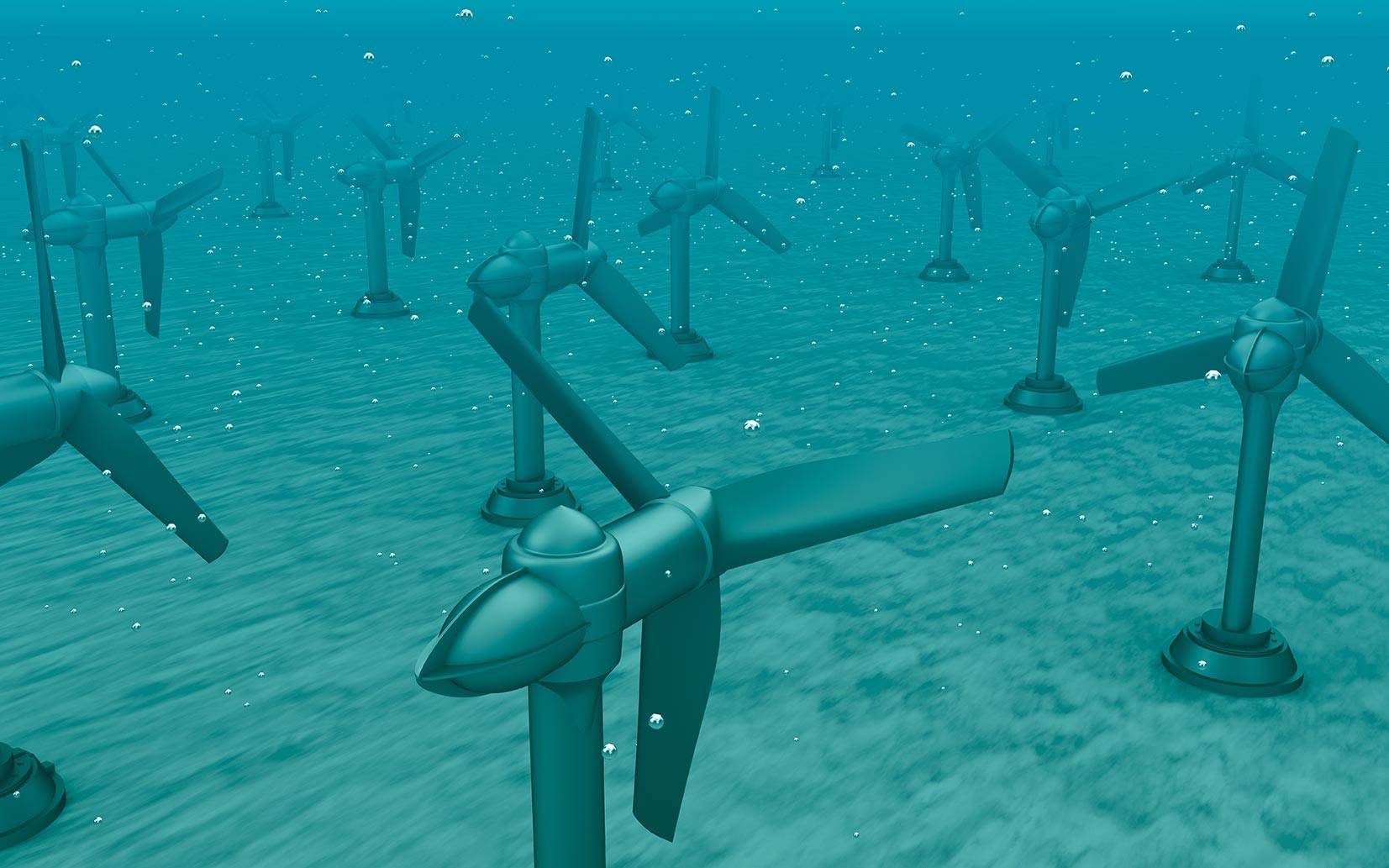
Decarbonizing data centers
The data center of the future must be decarbonized. In our digital world, data centers have become some of the world’s biggest consumers of power. Now, says AECOM’s Sam Mackilligin, they need to become carbon-free and they need clean, reliable sources of electricity

The world used to run on oil – now it runs on data. Every second of the day, every person creates 1.7 MB of new information – equivalent to 340 e-mails – says NodeGraph, a data intelligence platform. That means that data centers are one of the fastest-growing and most important components of the global economy, and as new technologies emerge such as AI, the Internet of Things, cryptocurrencies and self-driving vehicles, this growth will accelerate.
Although data centers have become much more efficient in the past decade, the growth in data has been so spectacular that the centers have inevitably become some of the biggest energy consumers, using 1 per cent of total electricity demand, says the International Energy Agency. That has been projected to rise to 8 per cent by the end of the decade.
Every second of the day, every person creates 1.7 MB of new information
Today, much of that electricity is generated using fossil fuels, but governmental, regulatory and societal pressure won’t stand for that as we ramp up efforts to protect our environment and planet. Almost half of global GDP is now covered by net zero targets such as the UK’s Net Zero Law and the EU’s Green Deal, while consumers and investors are also demanding action. We need to act now to decarbonize data centers, and there are three key areas to address.
Less heat, less energy use
The first area to tackle is a reduction in the amount of energy that facilities use. It has partly been happening naturally as customers outsource data storage to the cloud and dedicated operators take advantage of economies of scale in “hyperscale” data centers.
Giant data facilities use about 40 per cent of their energy to keep their servers cool. Technological solutions to this include passive cooling, which ensures hot and chilled air do not mix and immersive liquid cooling, where servers are immersed in a rack filled with coolant that can have more than 1,000 times the heat capacity of air. The coolant absorbs the heat from the servers and is then removed from the rack.
Many operators are already using AI, some examples of which are saying it has cut cooling costs by 40 per cent by using machine learning to apply the optimum amount of cooling at any given time.
Location helps too: A global cloud services provider has used seawater to cool a facility in Finland, while as seen recently in the press Microsoft’s Project Natick is experimenting with siting centers on the seabed to keep temperatures down. Data centers can also simply be built somewhere cold, such as Iceland, where BMW’s data is stored, or northern Sweden, which hosts a number of the world’s global hyperscale data center facilities.
Another crucial approach is to siphon off the heat and use it for something else, such as heating homes or greenhouses. The Condorcet data center in Paris transports its waste heat directly into the nearby Climate Change Arboretum, where scientists are studying how high temperatures affect plants. In Switzerland, the heat from an IBM data center warms a nearby swimming pool.
As data center growth continues, becoming a source of heat for nearby homes and businesses is one way the centers can be integrated into communities and contribute to wider decarbonization efforts.
Greening the power supply
The next step is to clean up the power that data centers use. In China, 73 per cent of data centers use coal power, Fortune reports, while Loudoun County in northern Virginia is host to 70 per cent of the world’s internet traffic and has the highest concentration of data centers in the world, because of its proximity to Washington DC and its low electricity prices. But Virginia’s power sector is overwhelmingly based on fossil fuels – more than half its power is gas-fuelled and a tenth is coal-fired.
Tech companies and data center providers are already becoming some of the biggest corporate buyers of clean power, mainly from wind and solar farms. In 2019, Google announced a 1.6GW, $2bn package of deals that was equivalent to putting solar panels on 1 million homes, for example.
But there is still a long way to go. Companies truly looking to decarbonize their energy supply need to switch all their primary systems to grid electricity, then move to an auditable “zero carbon” electricity supply. Signing up for a “green tariff” from a utility allows a company to buy an amount of renewable power equivalent to its power consumption, but there is no way of knowing, at any given time, whether the electrons being used are green because wind and solar resources are intermittent and when they are not providing power, back-up generation is often fossil fuelled.
A more direct route is to sign up to a power purchase agreement with a clean energy project developer for power at a fixed price over a period of a decade or more. But finding a project that exactly matches a company’s demand profile is problematic and grid electricity will still be a back-up.
One promising option is to use tidal power, which offers completely reliable power, predictable centuries in advance.
AECOM has been working with SIMEC Atlantis Energy on its MeyGen project in the Pentland Firth between the Scottish mainland and the Orkney Islands. Pentland has some of the world’s most powerful tidal resources, with currents reaching 11 mph.
The site is close to a number of existing or planned high speed international fiber optic cables and AECOM has been working with Atlantis to assess the feasibility of creating a data center with access to predictable renewable generation with grid back-up, in a location where the low temperatures can help to keep it cool.
Atlantis plans to install another 80MW of tidal turbines, in addition to the 6MW already in the water, and build the world’s first ocean-powered data center in what could become a model for other facilities. However, as with other renewable generation sources, it does not produce power all the time, so it needs some form of energy storage alongside it to make sure that power is constantly available.
Harnessing tidal power to decarbonise data centres
Listen to Sam Mackilligin. Director of Zero Carbon Energy Systems talk about decarbonising data centres.Clean energy storage and back-up
Data centers need to ensure their power supply is not interrupted, and like many other sectors, they mostly use diesel back-up generators to do this. That will need to change.
Flow batteries store their energy in tanks of electrolytes and can hold their charge indefinitely, making them potentially more effective. They have yet to scale up like lithium-ion batteries, but they are set to become commercially available by 2023. A combination of flow batteries and tidal power will give data center operators power that is easily traceable and entirely renewable, allowing them to demonstrate that they are 100 per cent renewable.
The emerging hydrogen economy may also provide an alternative. Hydrogen is seen as one of the keys to the next stage of decarbonization. It can power cars, ships and heavy trucks, heat homes and businesses and it can be produced using surplus renewable energy and carbon emissions from industrial facilities. For the MeyGen project, for example, surplus power from nearby wind farms could be used to produce hydrogen, which can then be stored for use when it is needed, either to be burnt in modified diesel generators or used in fuel cells.
New opportunities
Combining all these trends represents a significant opportunity for the UK, which has some of the best tidal power resources in the world. By taking advantage of tidal power’s predictability, data centers looking to cut their carbon in a transparent way could accelerate the deployment of tidal, as well as providing a use case for flow batteries.
Traceability in supply chains has been important in industries from pharmaceuticals to food for some time – and now it is coming to electricity. AECOM is already applying this principal to charging electric vehicles so that fleet owners can demonstrate their cars are using 100 per cent renewable power. We can help data centers to prove they are 100 per cent renewable, too.